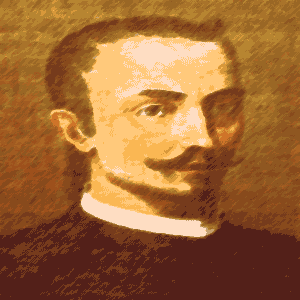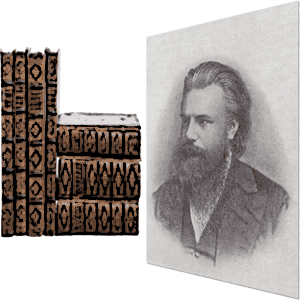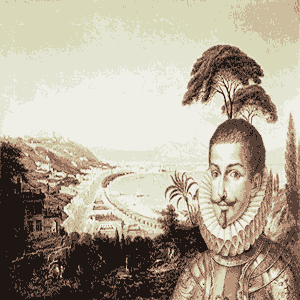Giulio Cesare Polerio - The Chess Historian

Giulio Cesare Polerio
Polerio's impact on the development of chess theory was probably more important than his fine record as a chess player. He wrote 7 codexes which can be thought of as the embryo of chess theory among several other chess manuscripts.
We shouldn't forget, just the same, that he was a strong master, thought by some to be arguably the best in the late 1500s. He was bested only by Leonardo and Boi in the 1570s and 80s. By the 1590s he was in the running for becoming the leading master of his time.
Early Days

Giulio Cesare Polerio - Polerio came from Lanciano, Chieti
Soon Polerio was appearing in the Roman courts, rubbing shoulders with Leonardo, Boi, Capute and other leading masters. He quickly proved his mettle, rising in status above all others apart from Leonardo and Boi.
This was illustrated by his inclusion in the Italian traveling party to the first International Masters Tournament in Madrid. Although he did not take part in the tournament itself, he did serve as a second and a training partner to Leonardo and Boi.
The Madrid Era

Giulio Cesare Polerio - The Italians were victorious in Madrid
Leonardo and Boi were Italy's strongest players and they would face Lopez and Ceron of Spain in a four man tournament. It was the first of it's kind, the first International Masters Tournament. The two Italians finished first and second leaving the Spaniards in their wake.
Polerio was in the Italian party as a second and analysis partner. He also played many games in Madrid against Spanish masters, gaining admiration from his hosts. He stayed on in Madrid for quite some time afterwards.
Muzio or Polerio
Muzio Gambit (Polerio Gambit) - 1.e4 e5 2.f4 exf4 3.Nf3 g5 4.Bc4 g4 5.O-O
Jacob Henry Sarratt translated one of Alessandro Salvio's chess works which discussed the opening in the early 19th Century. Sarratt claimed that Salvio was shown this opening by Signor Mutio, who used to regularly beat the master Geronimo Cascio with it. He began the practice of referring to the opening as the Muzio Gambit.
Antonius van der Linde analyzed Polerio's Seven Codexes in great detail at the end of the 19th Century. He called the opening the Polerio Gambit. The opening is usually, though not always called the Muzio Gambit these days.
The Seven Codexes

Giulio Cesare Polerio - Antonius van der Linde undertook a comprehensive investigation of Polerio's Seven Codexes in 1874
He also looked at the opening 1.e4 c5 in one of the volumes. This opening as you probably know would later be called the Sicilian Defense. Some of Polerio's work on it formed the basis for it's later development.
Codex D contains of a number of games and 40 problems. These Seven Codexes were heavily analyzed by Antonius van der Linde in 1874. Van der Linde's work places Polerio in a prominent role in the early stages of chess theory.
Later Years

Giulio Cesare Polerio - Polerio beats Domenico with the Fried Liver Attack, you can see the game in the link
He was the strongest player in Rome by the mid-1580s. After the death of his great friend and mentor, Leonardo da Cutri, only Paulo Boi could be considered his superior.
He didn't challenge Boi at any point but he was at least comparable in strength. He was perhaps even stronger than Boi during the 90s but both would be overtaken by Salvio. Polerio was beaten by Geronimo Cascio in 1606 in his last major match of note. He died in 1612.
Moving On

Alessandro Salvio
He was one of the early practitioners of recording games, annotating and appraising them. He constructed problems to solve. On top of that he analyzed openings, trying to find the truth of these openings, were they sound or not?
Others would follow in his footsteps, documenting important historical facts of chess. Developing opening theory, working on tactical puzzles. Recording the games of the great masters.
It was through these practices that chess players were able to improve relentlessly through the generations as they could use their predecessor's discoveries as a starting point. The next great chess historian after Polerio was Alessandro Salvio.






